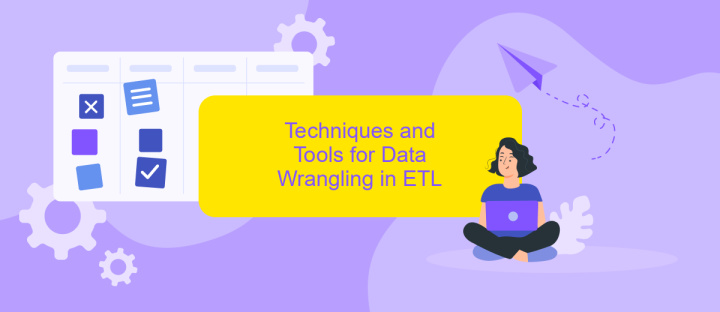Data Wrangling ETL
Data wrangling, a crucial step in the ETL (Extract, Transform, Load) process, involves cleaning, structuring, and enriching raw data into a desired format for better decision-making. This article explores the significance of data wrangling within ETL pipelines, highlighting techniques, tools, and best practices to ensure data quality and efficiency in analytics and business intelligence applications.
Introduction to Data Wrangling and ETL
Data wrangling, also known as data munging, is the process of transforming and mapping raw data into a more usable format for analysis. This crucial step in data analysis ensures that data is clean, organized, and ready for further processing. Extract, Transform, Load (ETL) is a popular method used in data wrangling to collect data from various sources, transform it according to business rules, and load it into a target database or data warehouse.
- Extract: Collecting data from different sources such as databases, APIs, and flat files.
- Transform: Cleaning, filtering, and converting data into a desired format.
- Load: Inserting the transformed data into a target system for analysis and reporting.
Effective data wrangling and ETL processes are essential for accurate data analysis and decision-making. Tools like ApiX-Drive can simplify the integration of various data sources, automating the extraction and transformation processes. By leveraging such services, businesses can ensure their data is consistently accurate and up-to-date, enabling more efficient and insightful analyses.
Benefits of Data Wrangling using ETL

Data wrangling using ETL (Extract, Transform, Load) offers significant benefits for organizations dealing with large volumes of data. One of the primary advantages is the ability to clean and structure raw data, making it more useful and insightful for analysis. ETL processes automate the extraction of data from various sources, transforming it into a consistent format, and loading it into a centralized repository. This automation not only saves time but also reduces the likelihood of human error, ensuring higher data quality and reliability.
Another key benefit is the seamless integration of disparate data sources. Tools like ApiX-Drive facilitate the connection and synchronization of multiple platforms, enabling a more comprehensive view of business operations. By using ETL for data wrangling, organizations can achieve better data governance, improved decision-making, and enhanced operational efficiency. This streamlined process empowers businesses to leverage their data assets more effectively, driving innovation and competitive advantage.
Techniques and Tools for Data Wrangling in ETL

Data wrangling in ETL (Extract, Transform, Load) is a crucial step to ensure data quality and consistency. It involves cleaning, structuring, and enriching raw data into a desired format for analysis. This process can be complex, requiring various techniques and tools to handle diverse data sources and formats effectively.
- Data Cleaning: Removing duplicates, handling missing values, and correcting errors.
- Data Transformation: Converting data types, normalizing values, and aggregating data.
- Data Integration: Combining data from multiple sources, which can be facilitated by tools like ApiX-Drive for seamless integration.
- Data Validation: Ensuring data accuracy through validation rules and consistency checks.
- Data Enrichment: Enhancing data by adding external information or context.
Several tools can aid in data wrangling, such as Python libraries (Pandas, NumPy), SQL-based tools, and ETL platforms like Apache NiFi, Talend, and ApiX-Drive. These tools provide functionalities to automate and streamline the wrangling process, making it more efficient and less error-prone. Leveraging these techniques and tools ensures that the data fed into analytical models is reliable and insightful.
Challenges and Best Practices in Data Wrangling

Data wrangling presents several challenges, including dealing with inconsistent data formats, missing values, and the integration of data from multiple sources. These issues can significantly slow down the ETL (Extract, Transform, Load) process and affect the quality of the final dataset.
Moreover, the complexity of data wrangling increases with the volume and variety of data. Handling large datasets requires robust tools and efficient algorithms to ensure timely processing. Additionally, maintaining data integrity and security during the wrangling process is crucial.
- Standardize data formats early in the process to avoid inconsistencies.
- Utilize automated tools like ApiX-Drive for seamless data integration.
- Implement thorough validation checks to handle missing or erroneous data.
- Regularly monitor and audit data wrangling processes for quality assurance.
Adopting these best practices can streamline the data wrangling process, making it more efficient and reliable. Tools like ApiX-Drive can further enhance integration capabilities, allowing for smoother data flow and reducing manual intervention. This ensures that the ETL pipeline remains robust and capable of handling complex data scenarios.


Conclusion and Future of Data Wrangling in ETL
In conclusion, Data Wrangling remains a critical component of the ETL (Extract, Transform, Load) process, ensuring that raw data is converted into a clean and usable format for analysis and decision-making. As organizations continue to generate vast amounts of data, the importance of efficient and effective data wrangling techniques cannot be overstated. Tools and platforms that automate and simplify data wrangling tasks, such as ApiX-Drive, play a pivotal role in streamlining the integration and transformation processes, thus allowing businesses to focus on deriving insights rather than dealing with data inconsistencies.
Looking ahead, the future of Data Wrangling in ETL is poised to be shaped by advancements in artificial intelligence and machine learning. These technologies promise to further automate complex data wrangling tasks, making the process faster and more accurate. Additionally, the growing trend towards real-time data processing will necessitate more robust and scalable data wrangling solutions. As the landscape evolves, services like ApiX-Drive will continue to innovate, offering enhanced capabilities for seamless data integration and transformation, ultimately empowering organizations to harness the full potential of their data.
FAQ
What is Data Wrangling in the context of ETL?
Why is Data Wrangling important in ETL processes?
What are the common challenges faced during Data Wrangling?
How can automation tools help in Data Wrangling and ETL processes?
What are the best practices for effective Data Wrangling?
Apix-Drive is a universal tool that will quickly streamline any workflow, freeing you from routine and possible financial losses. Try ApiX-Drive in action and see how useful it is for you personally. In the meantime, when you are setting up connections between systems, think about where you are investing your free time, because now you will have much more of it.

